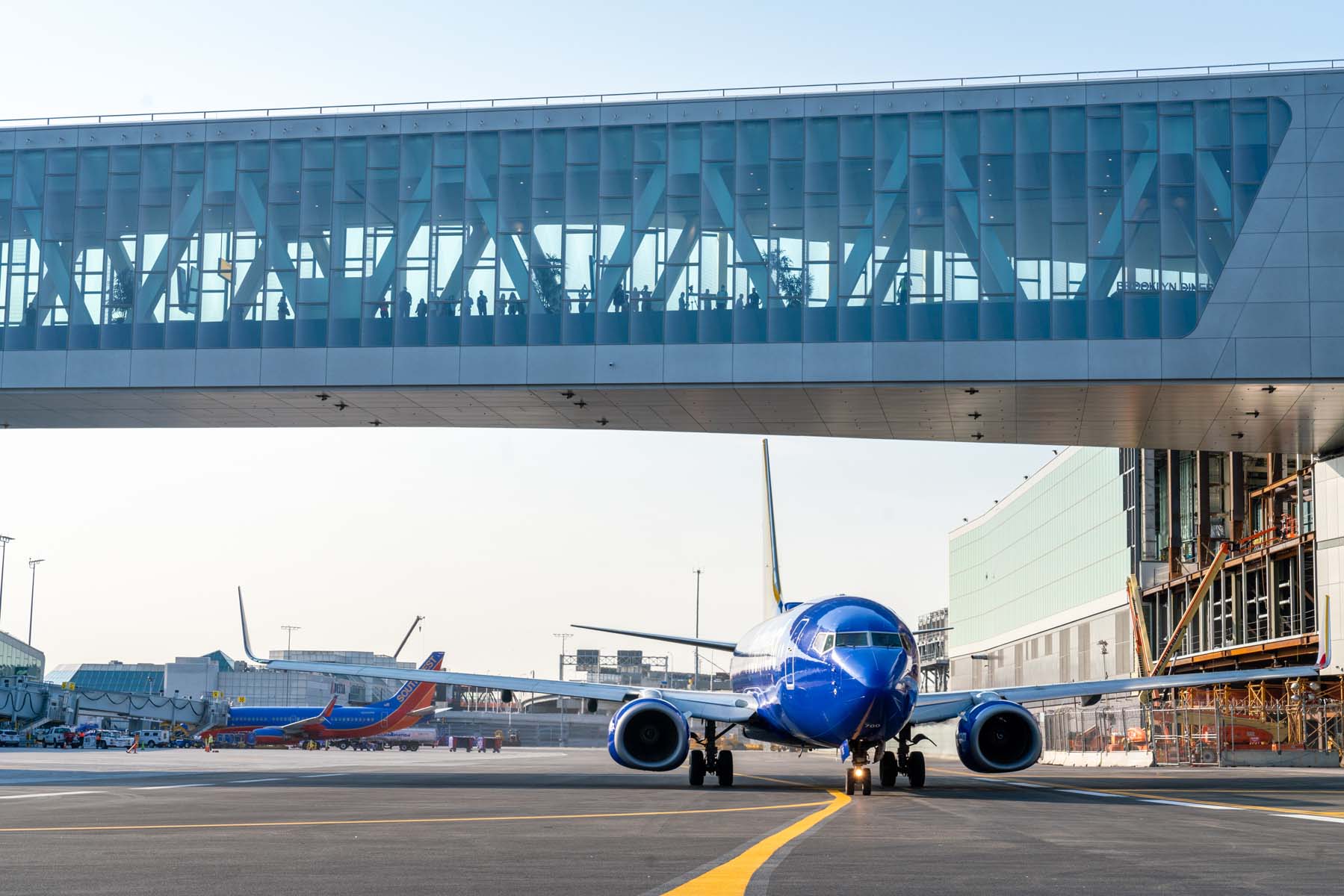Waste management at airports is a complicated – but important – task. Airports are busy environments, with people constantly coming and going, and that means more trash. The Federal Aviation Administration (FAA) reports that U.S. airports alone generate about 365,000 tons of waste each year.
It’s not just the sizes of the crowds, either. The complex logistics of airports mean that there are hurdles and challenges that other facilities, like large arenas or sporting venues, don’t have to face, such as security, local rules for waste disposal, compliance reporting, strict regulations on waste from international flights, and more.
At Vantage Group, we’re meeting the challenge head on. At each of our locations, we prioritize waste management as part of our broader commitment to making airport facilities as sustainable as possible. We take meaningful, data-informed steps to bring the latest thinking and technology to not only keeping our airports clean but making things as seamless and painless for passengers as possible.
Our philosophy is also built around collective action; our team members and the many employees working at our airport locations take ownership of the vitally important task of waste management, while also encouraging passengers to keep proper disposal top of mind.
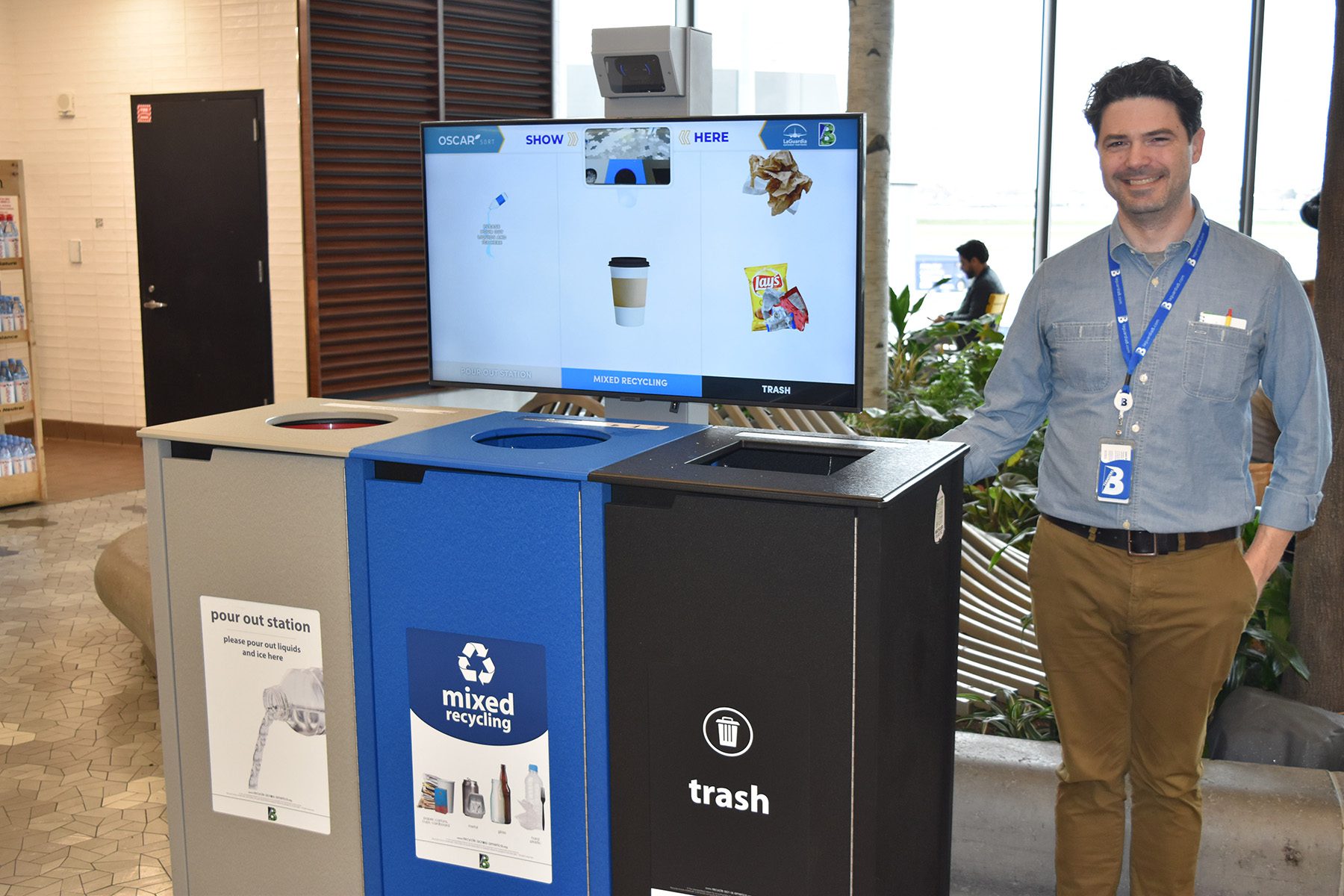
At airports, travelers are focused on navigating every step of their journey, from arriving at the curb to boarding the aircraft on time.
That doesn’t leave a lot of room for thinking about how to discard their snack wrappers. We have to make it very easy for passengers to dispose of waste properly.
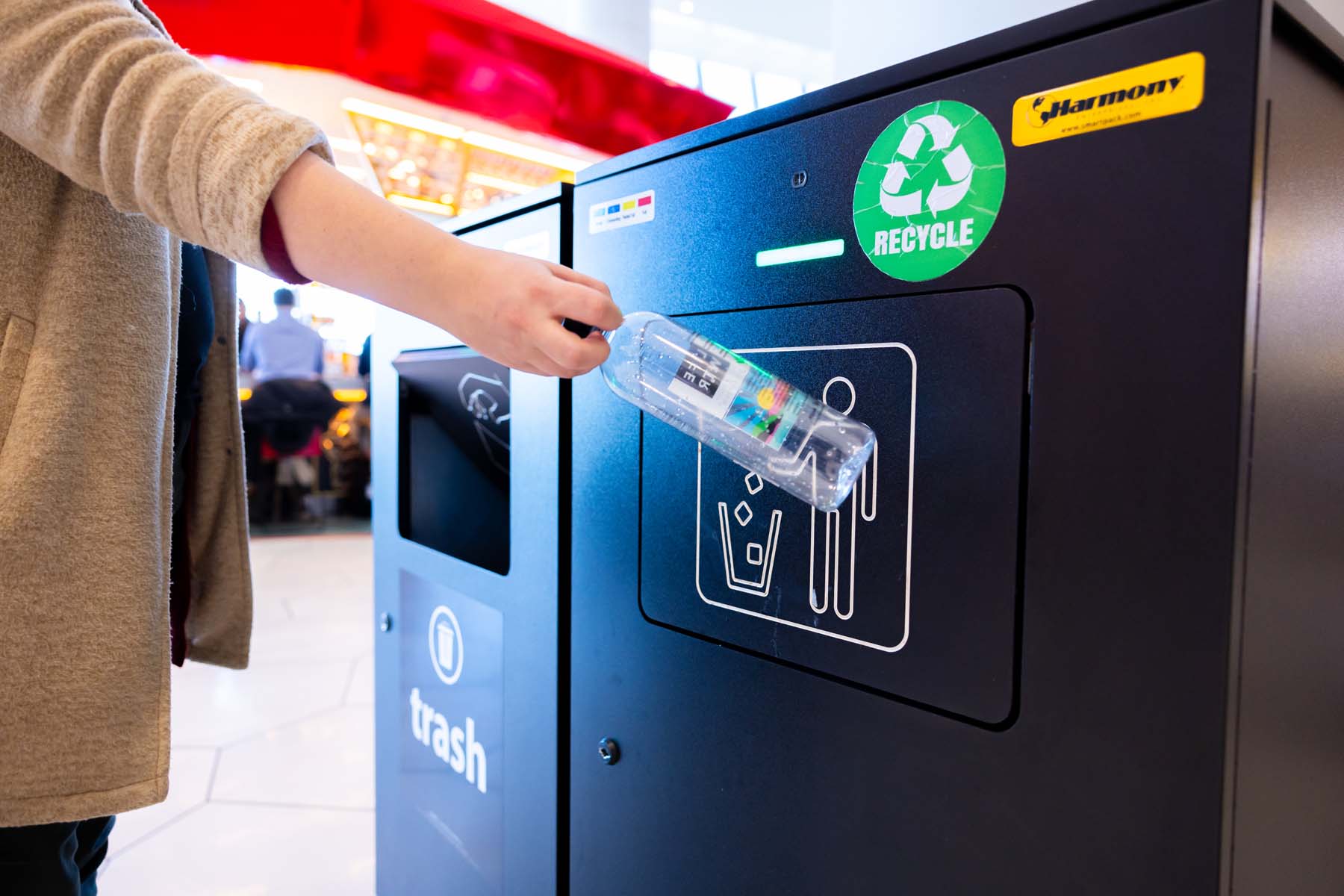
Limiting Waste – By Making Less
A mixed recycling project at Hamilton International Airport typifies Vantage’s approach of grassroots action driven by data. Airport staff recently introduced new waste receptacles, along with a benchmark waste audit to gain a greater understanding of what was being thrown out, so that diversion efforts could be honed and made even more effective.
While many waste management challenges are unique to each airport, some overarching principles of waste management apply universally – for example, that good waste management practices start with waste avoidance. At John C. Munro Hamilton International Airport unclaimed items from the lost and found are donated to charitable organizations instead of being sent to a landfill. Leftover prepared food items are distributed to local community kitchens. Used coffee grounds go to fertilize the soil of the Royal Botanical Gardens rather than into the trash. And employees have also established the Hamilton Flybrary — a free little library stocked with books travelers leave behind.
Visit our John C. Monro Hamilton International Airport Location Profile
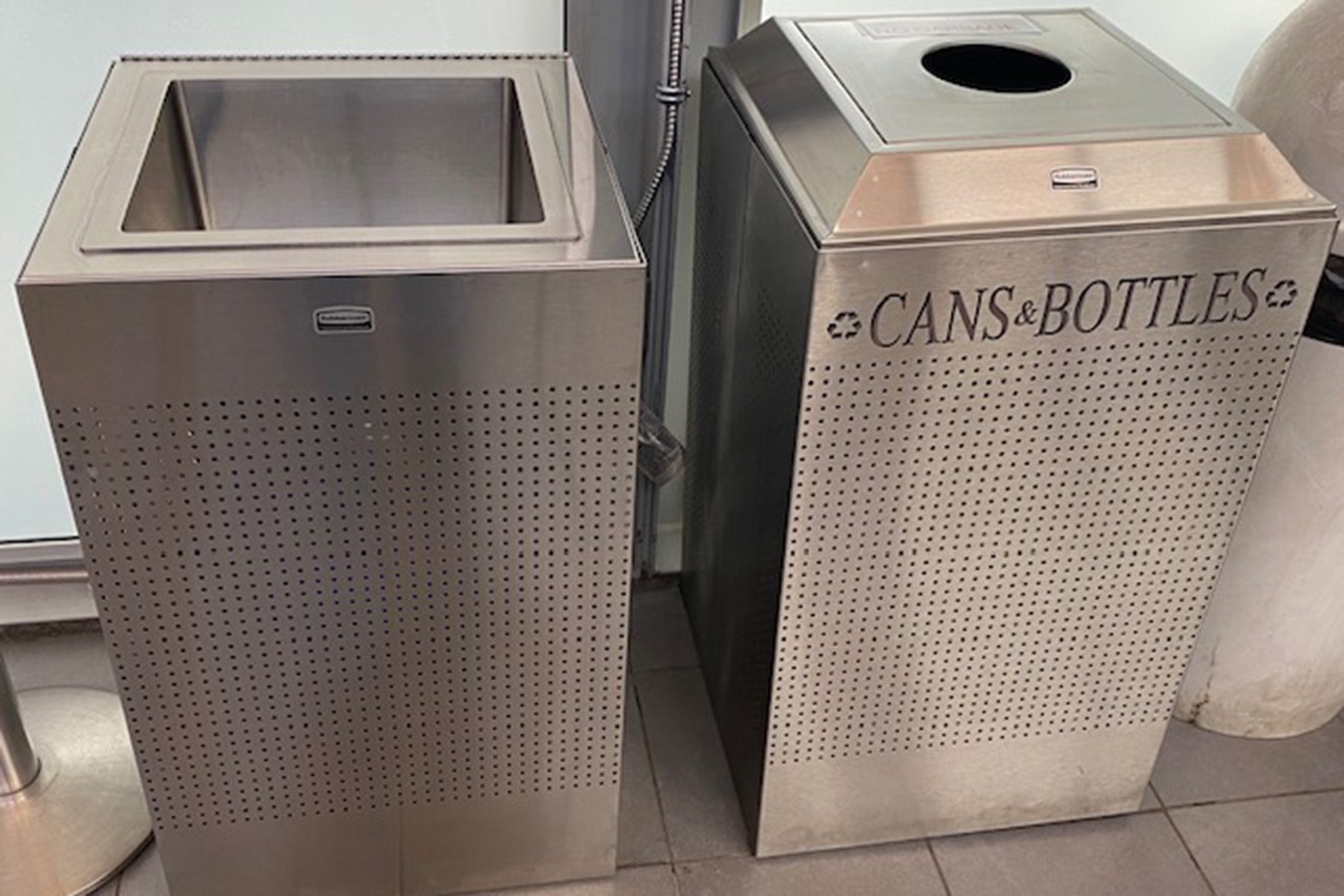
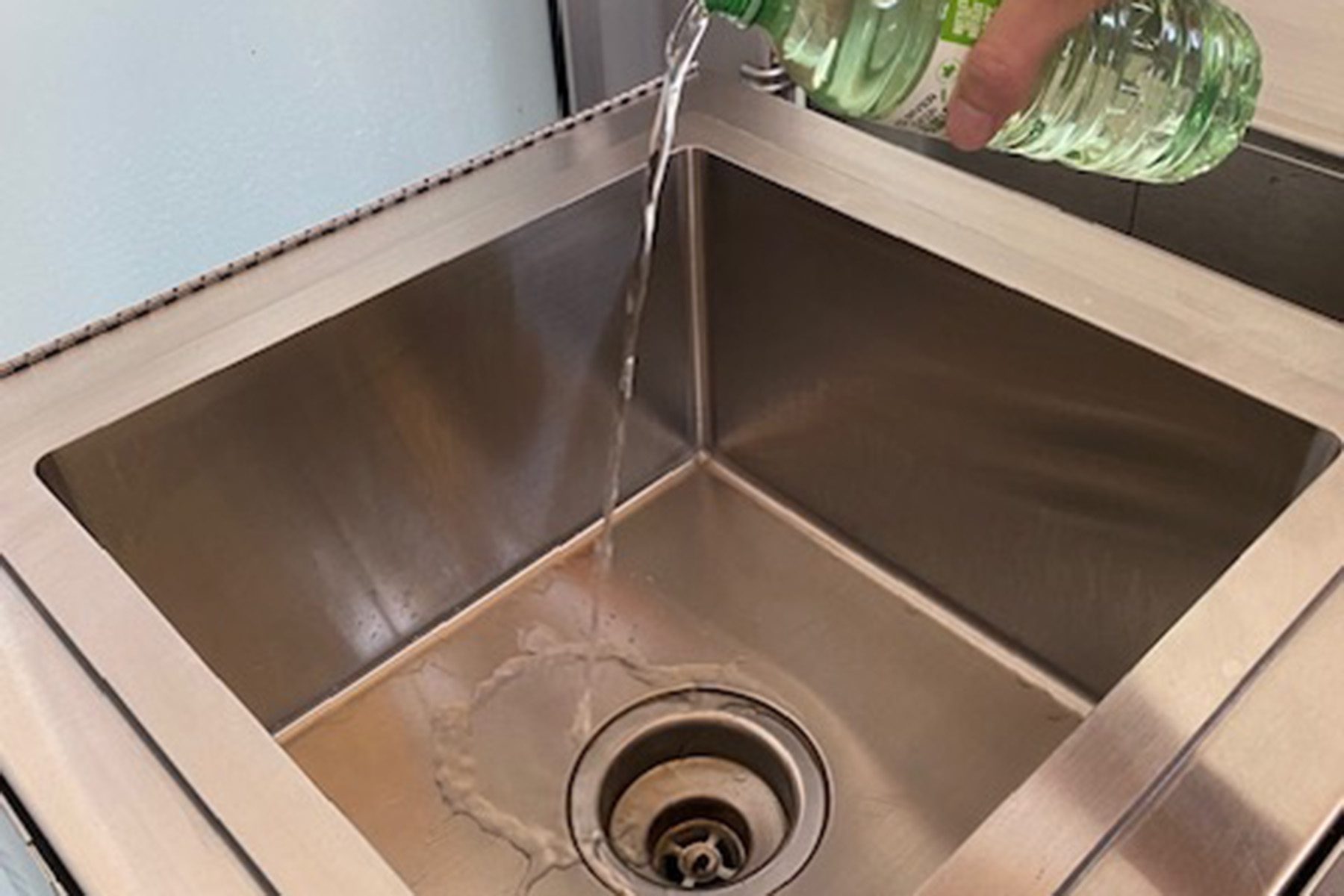
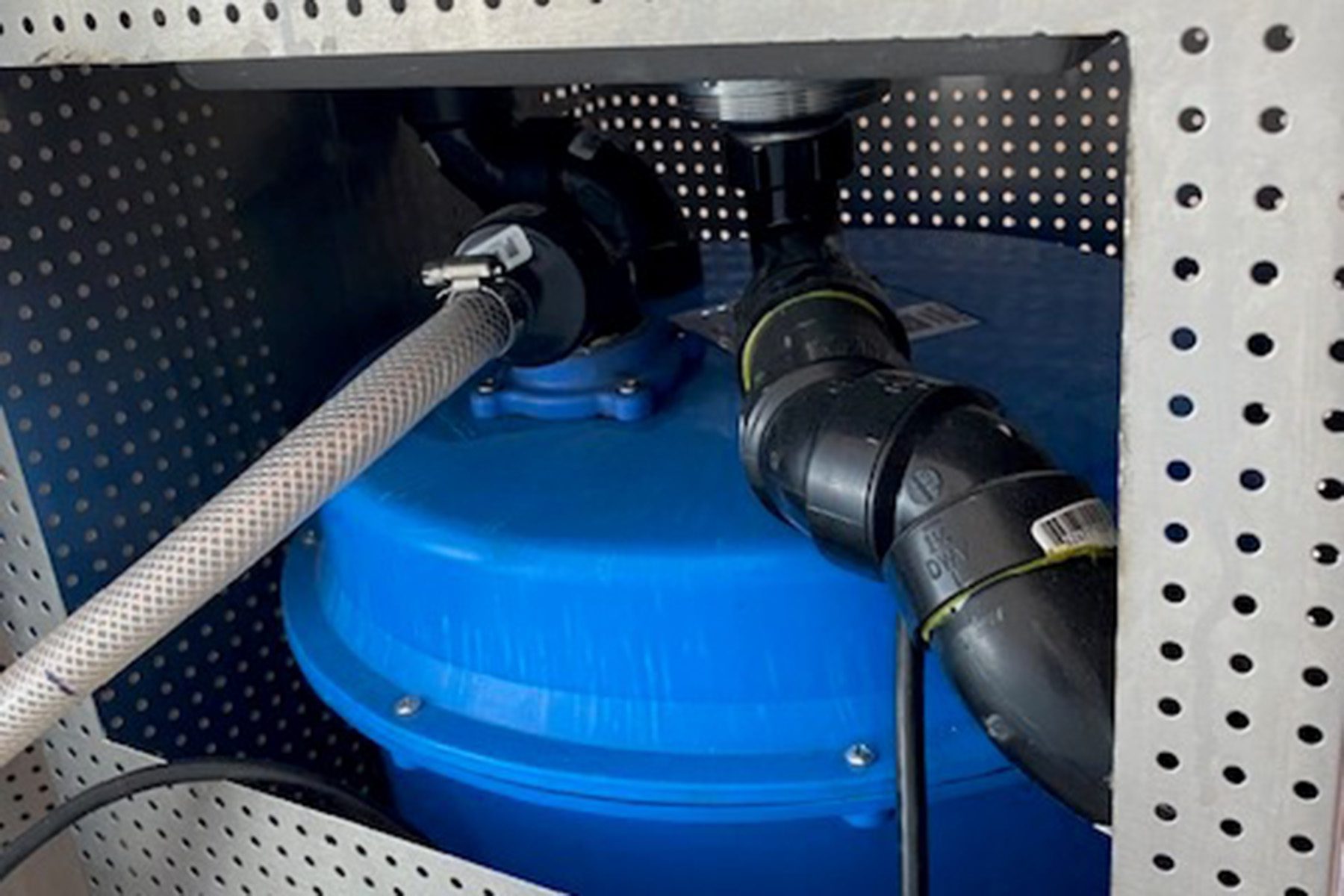
A Community-Driven Solution for Airport Liquid-Waste Disposal
Every traveler has witnessed or experienced the required disposal of water bottles or coffee cups at a passenger security screening checkpoint. Not just disappointing for the impacted traveler, these liquids also add significant weight to garbage bags and can potentially contaminate other waste streams. Diverting these heavy liquids drastically reduces the weight of landfill-bound waste, but not every airport can handle liquid waste disposal the same way.
At Vantage’s North Peace Regional Airport, which serves a small, regional community in British Columbia’s north, the team faced unique challenges: resources can be limited, shipping can be expensive, and suppliers can be hard to find, so ordering an off-the-shelf system wasn’t a viable solution.
Instead, airport staff with experience in contracting worked together to design and build a liquid-waste disposal system that suited the facility’s needs perfectly while also providing convenience to passengers as they move through the security checkpoint.
A stainless-steel bin and sink were used to create a pouring station at security, and below it a chemical-free pump automatically directs liquids into the drain. This eliminates the need for moving and emptying tanks or bladders, reducing labor and safety risks. With all of that safely disposed liquid comes a lot more recyclable containers, which the team now donates to their local Fort St. John Museum for returns of approximately $6,000 per year.
Taking Meaningful Action, From First Steps to Industry Best Practices
For many of our facilities, waste management practices are not just about compliance, or checking a box, but leading by example. Sangster International Airport in Jamaica, for example, recently began its first large-scale recycling program focused on international aluminum waste, even though the country does not mandate recycling, and the separation of waste is not widely practiced. The initiative has led to a significant amount of waste being diverted from landfills and helped drive business to local recycling outfits.
“It is a happy success story in which an opportunity for contributing positively to environmental preservation was realized and undertaken after repeated efforts,” said Keisha Mohan, Environment, Health and Safety Manager at Sangster.
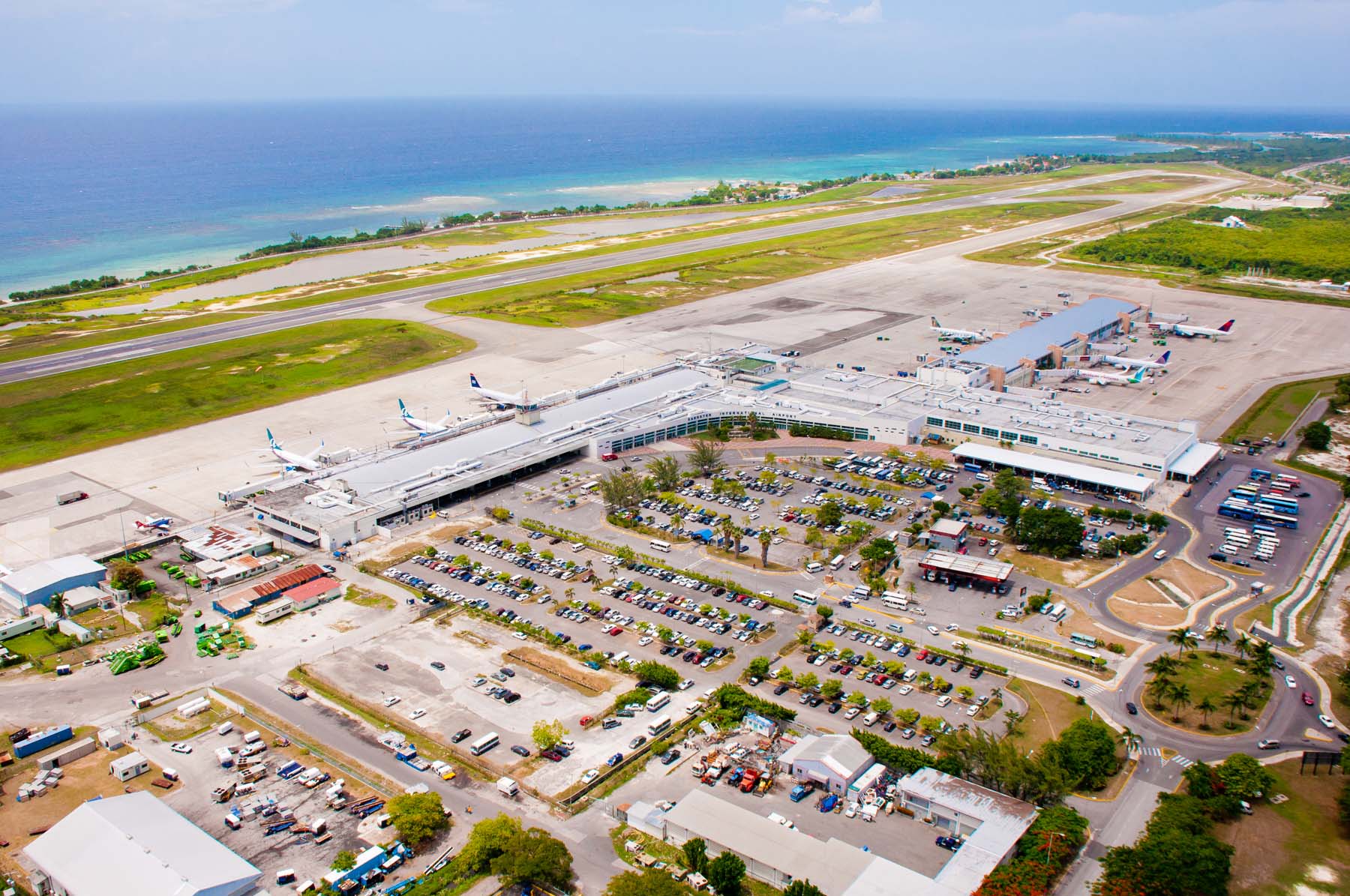
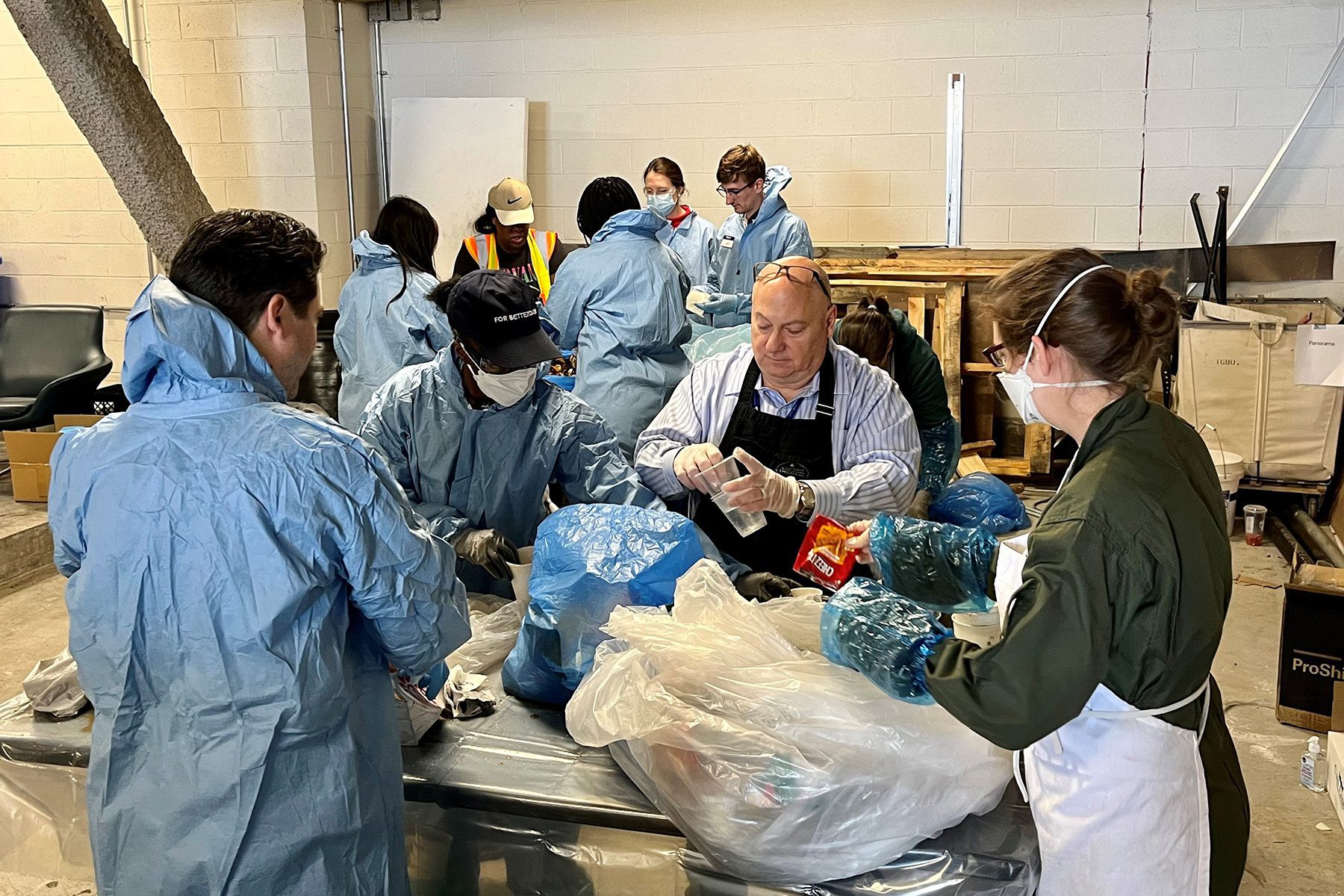
Understanding Patterns for Better Waste Management
A 2023 audit of waste at LaGuardia’s Terminal B shows how real change is possible when everyone gets involved.
Employees from all levels of LaGuardia Gateway Partners (LGP), from custodial staff to the CEO, jumped in to collect, sort and identify over two tons of waste in just six hours. The audit helped LGP’s team identify several key areas for improvement and gain a better overall understanding of waste streams. This led directly to new ideas like more pouring stations that prevent heavy liquid waste from finding its way onto trash trucks, and even the potential for the installation of an anaerobic digester, a system that can convert increased amounts of organic waste into usable energy for the terminal.
Armed with the audit’s results, the team has drastically increased the amount of liquid, organics, and recyclables removed from the landfill stream. In just five months, Terminal B’s diversion rate jumped from 23% to over 40%. Progress has continued and LGP’s diversion rate is now over 50%. This means roughly seven tons of waste is being diverted from landfills every single day.
“Efforts to increase recycling and composting require buy-in and participation across the entire terminal community, and the waste audit has also been a great way to engage and unite various stakeholders in a common goal,” said Bland.
Technology-led Solutions to Make Recycling a Breeze
Passengers in airports are always in a rush, thinking about getting to the gate on time, worrying about that important business meeting or dreaming of their final vacation destination. As such, encouraging good waste management practices is often about making things easier for travelers – and that’s where technology can help.
At LGA’s Terminal B, management recently introduced “Oscar,” an AI-powered waste sorting bin from Intuitive AI designed to incentivize people to sort their waste into recycling or trash. Because passengers can often have questions about what can or should be recycled, and standards differ from place to place, just knowing what to do with that empty cup can be a barrier.
Oscar bins not only standardize and streamline the process, but the smart recycling assistant is also equipped with a camera, computer, TV screen, and AI software that recognizes items held in front of the camera – immediately telling users what goes in which bin. Oscar bins even offer the potential of gamification by generating a QR code tied to promotions with concessions partners throughout the terminal. And the digitized experience also provides meaningful data that airport employees can use to better understand the terminal’s waste management needs.
In the initial three months following implementation, preliminary data reveals approximately 1,000 daily interactions across the six Oscar bins. Notably, the diversion rate at the stations equipped with Oscar screens stands at 47%, significantly higher than the 25% diversion rate observed in passenger-facing bins without the screens. This underscores the positive impact of Oscar units, as they actively guide passengers in correct recycling practices and contribute to an overall improvement in the terminal’s diversion rate.
At Vantage, a combination of practical ingenuity, data-driven programs, technology-led solutions, and a shared, network-wide responsibility to reduce and manage waste is helping us build for a better future.
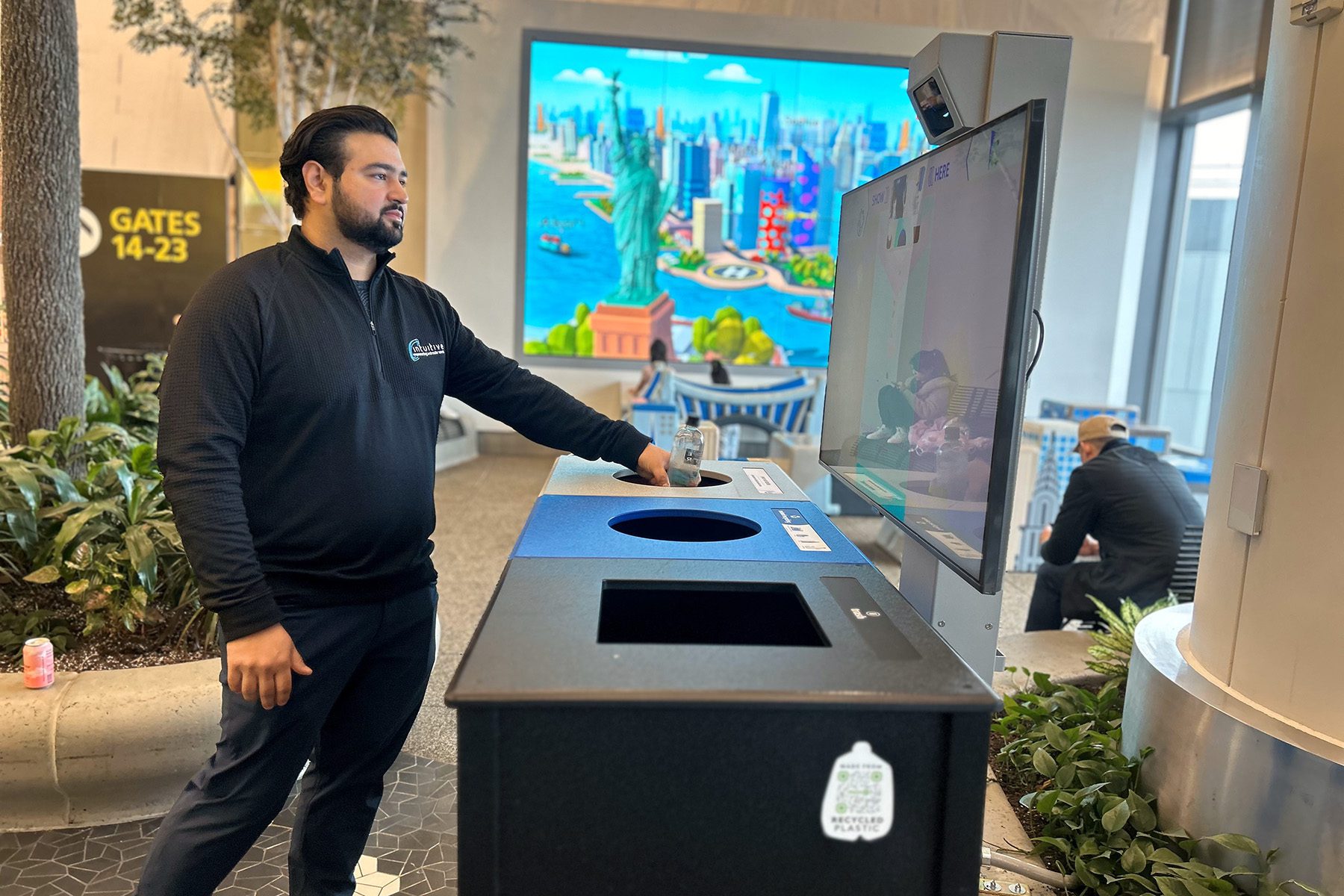
Resource Hub
Discover How Vantage Elevates Transportation Experiences
At Vantage, we’re launching innovative airport redesign projects and reimagining the future of transportation. See More in Our Resource Hub
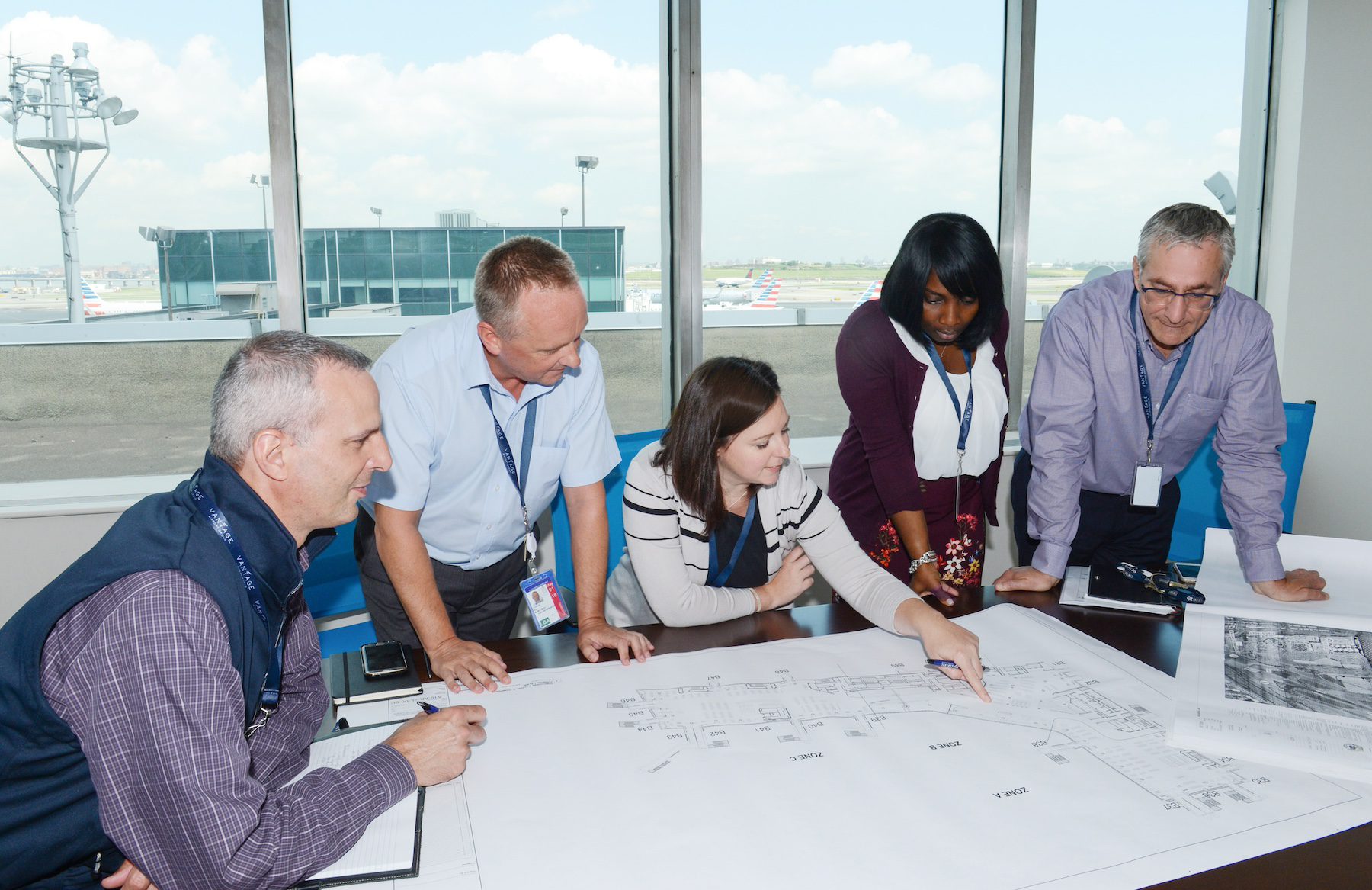
Transforming Transportation, Together
Let’s partner to bring your ideas to life, building sustainable, connected airports and transportation centers together.

Optional Pre-Title
H2 – Basic Content Page Block
Lorem ipsum dolor sit amet, consectetur adipiscing elit, sed do eiusmod tempor incididunt ut labore et dolore magna aliqua.
Duis aute irure dolor in reprehenderit in voluptate velit esse cillum dolore eu fugiat nulla pariatur. Excepteur sint occaecat cupidatat non proident, sunt in culpa qui officia deserunt mollit anim id est laborum.

